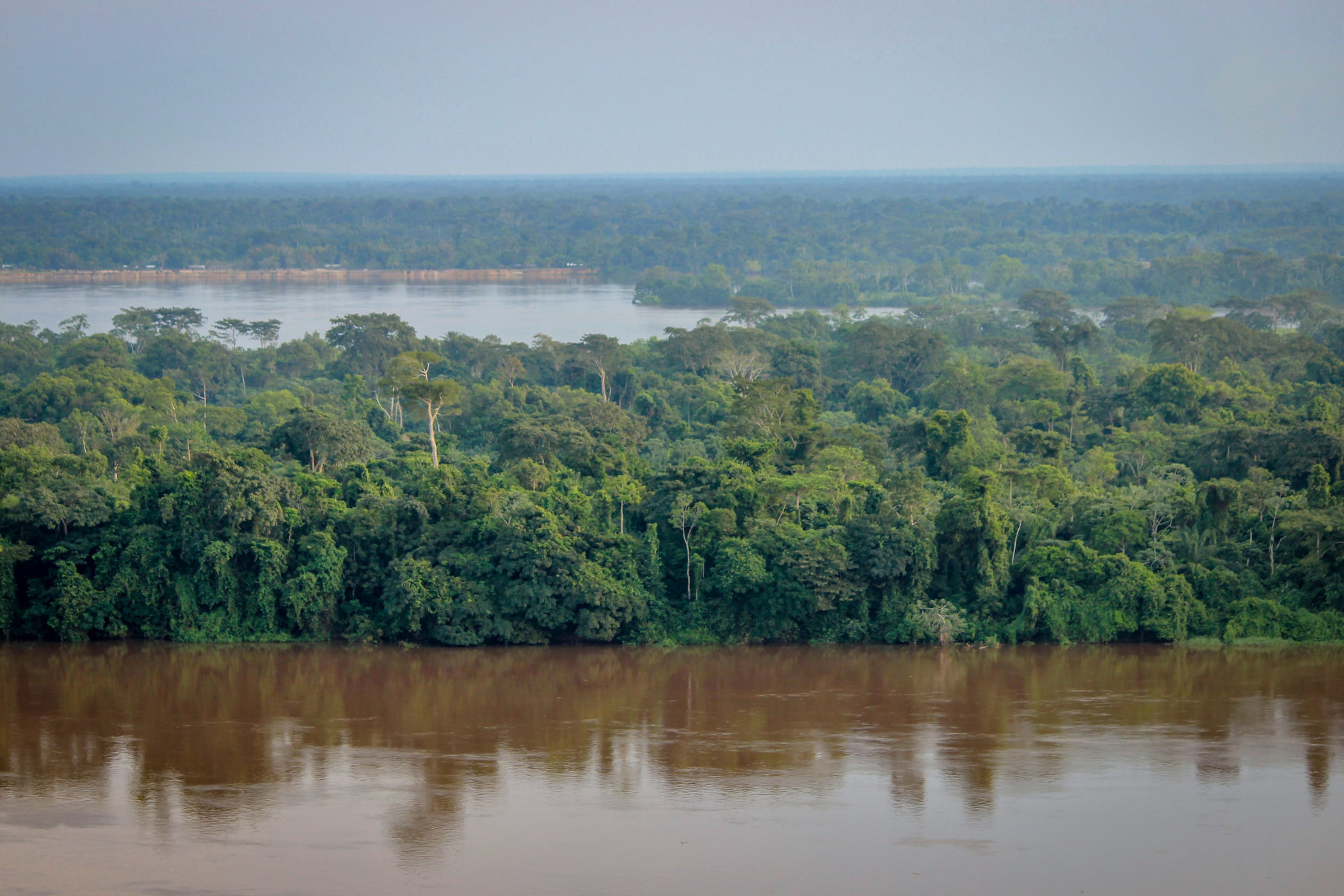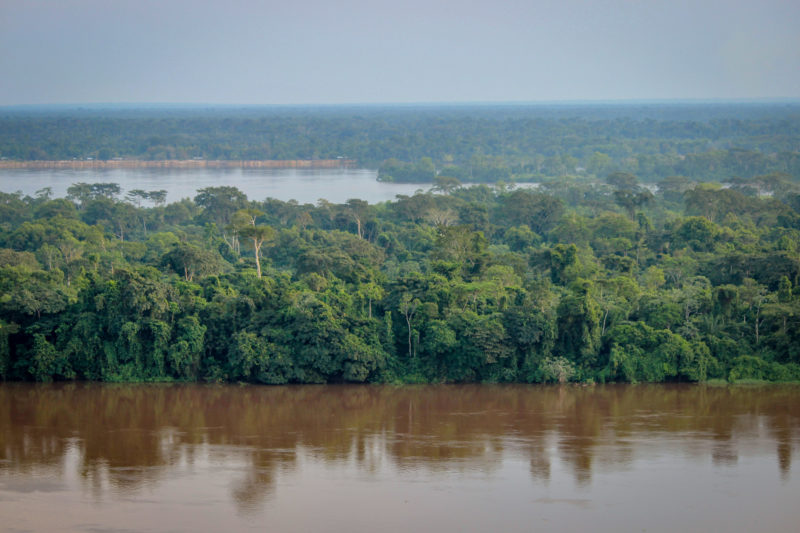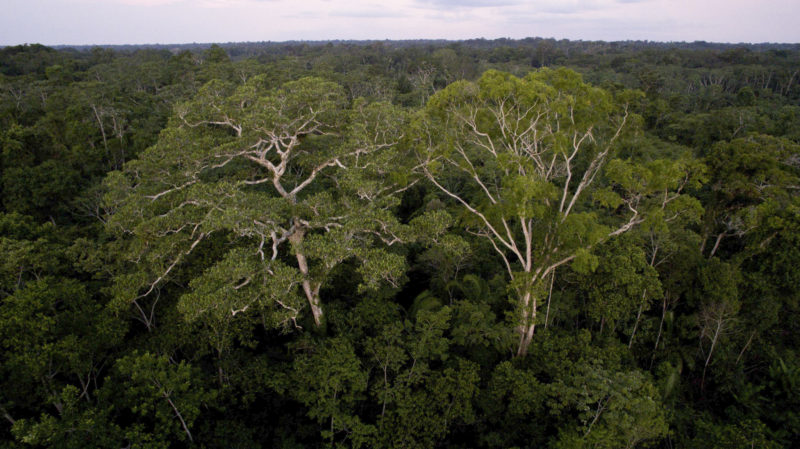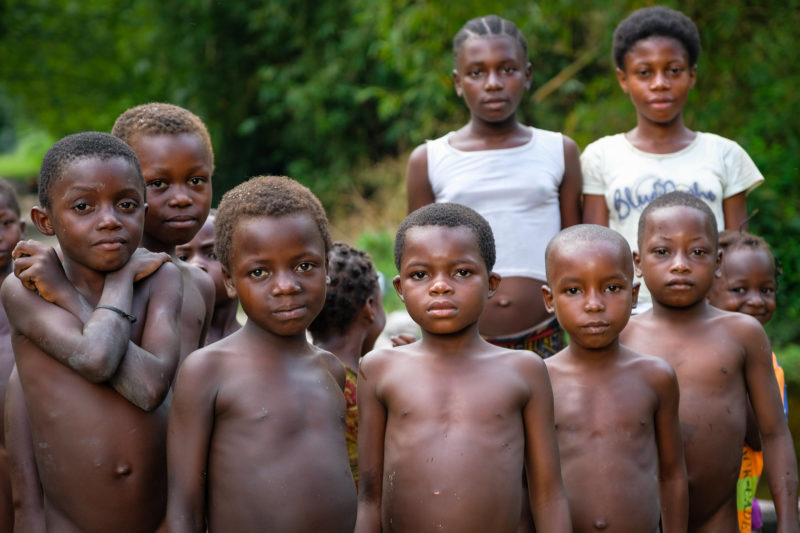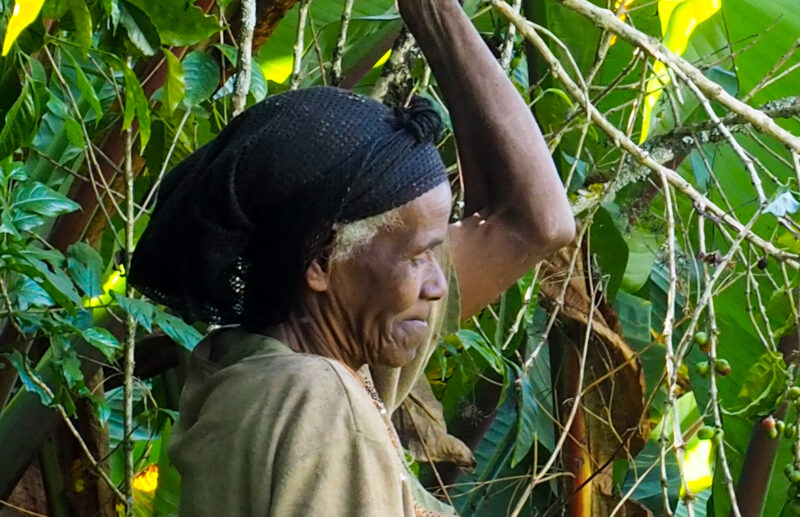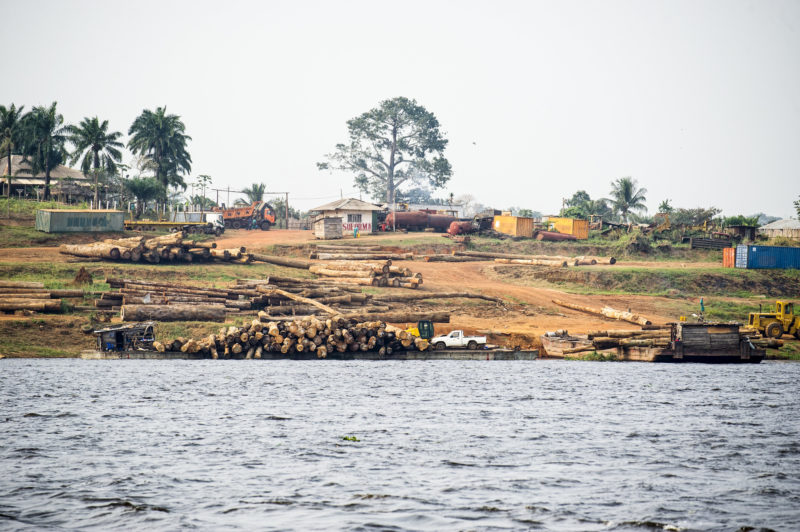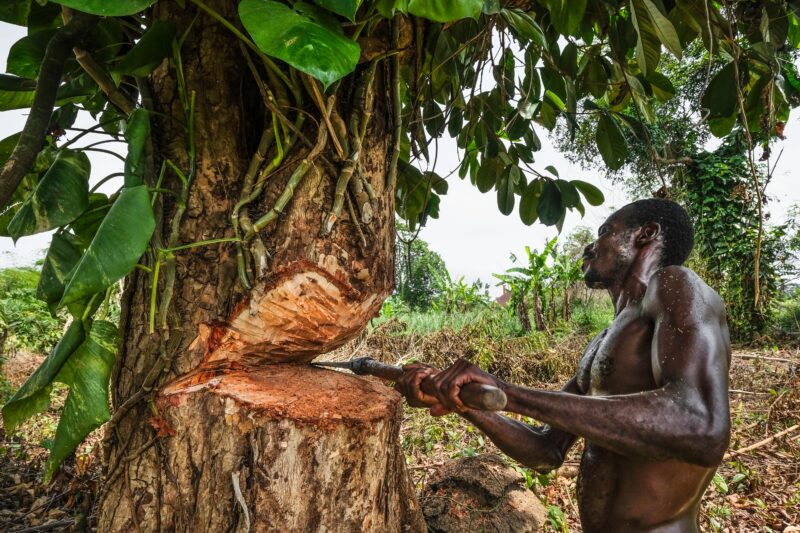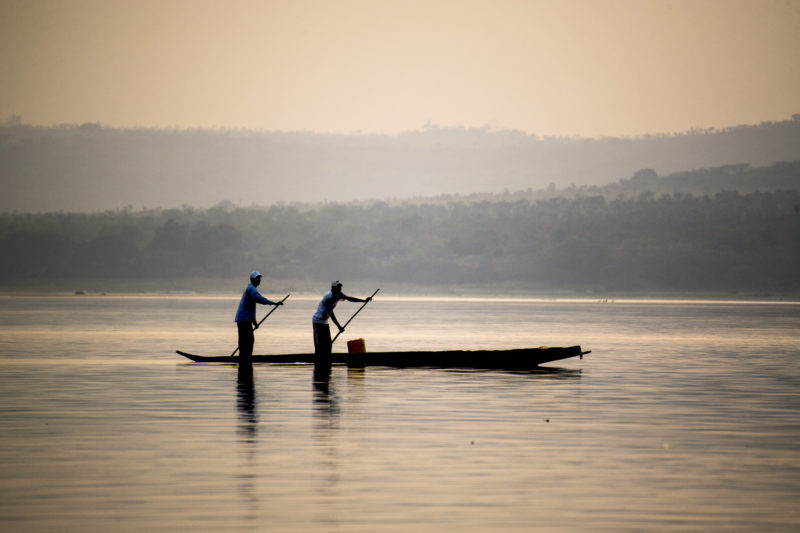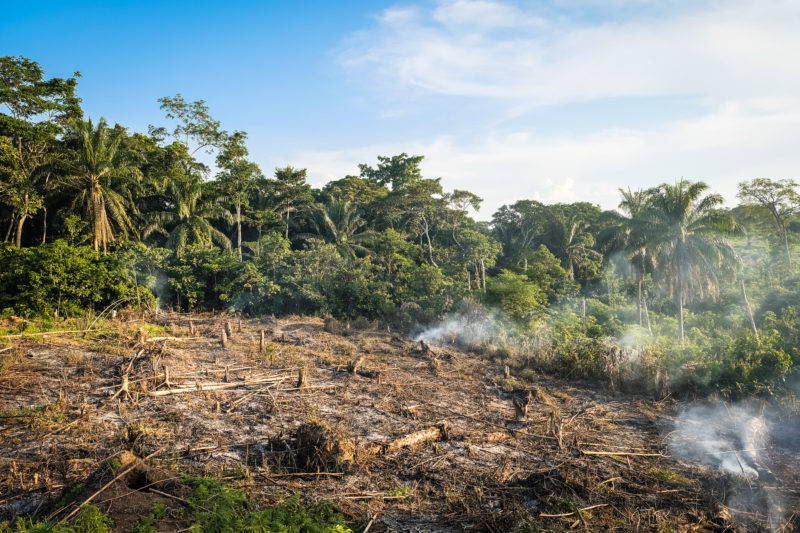The Congo Basin
The Congo Basin in Central Africa is home to the world's second largest rainforest after the Amazon. Deforestation is still low, but a rapidly increasing population will soon pose serious threats to the furests unless due action is taken. In 2015 Norway teamed with six Central African countries, donors and international organizations to protect these forests and promote sustainable development. It was named The Central African Forest Initiative - CAFI.
In the heart of Africa lies the second largest rainforest in the world, the Congo Basin rainforest. Enclosing the mighty Congo river system, it is teeming with unique animals and plant species. Protecting these forests is vital in order to prevent global warming.
In 2015 six Central African countries – Cameroon, the Central African Republic, the Democratic Republic of the Congo (DR Congo), Equatorial Guinea, Gabon and the Republic of Congo – teamed up with the EU, France, Germany, the Netherlands, Norway and The Republic of Korea to protect The Congo Basin rainforests.
The joint initiative was named The Central African Forest Initiative (CAFI), and it is the largest international collaboration to protect the Congo Basin. Its goal is to preserve the value of the forests in the region, to mitigate climate change, reduce poverty and ensure a sustainable development
It is the size of India or almost ten times the size of Germany, covering 3.3 million km2.
Almost two thirds of the forest is within DR Congo. It provides food, firewood, water and shade.
The smallest country, Equatorial Guinea, is roughly the size of Albania, with a mere 1.3 million people and an annual GDP of 22.700 dollars per capita..
The largest, DR Congo, is half the geographical size of the European Union, and has a population of almost 90 million, each earning only 767 US dollars a year – or two dollars a day – on average.
Equally important are large amounts of peatlands. These carbon rich, thick layers of organic soil have accumulated over millions of years in the whole region.
Recently a continuous peatland the size of UK was discovered in The Congo River basin between DR Congo and the Republic of Congo. This peatland stores an estimated amount of 30 gigaton of C02.
The lowland gorillas, bonobos (pygmy chimpanzees), forest elephants, okapi – the forest giraffe – and the magnificent Congolese peacock.
There are an overwhelming 10.000 species of plants, including 3.000 that are found only here, 600 tree species, 1000 bird species, 900 species of butterflies, 280 species of reptiles and 400 species of mammals.
The deforestation of this rainforest and the resulting lack of rainfall is a major concern on a continent with huge deserts like the Sahara and recurring droughts in the dry savannas of the Sahel.
The potential consequences for food production, social and political stability and on migration are unknown.
Deforestation
Deforestation in the Congo Basin is changing rapidly. In 2017, a tree-covered area of 18.000 km2 was lost, according to recent satellite data. This amounts to more than 7000 football fields of forest cleared every single day. Most of it occurred in DR Congo.
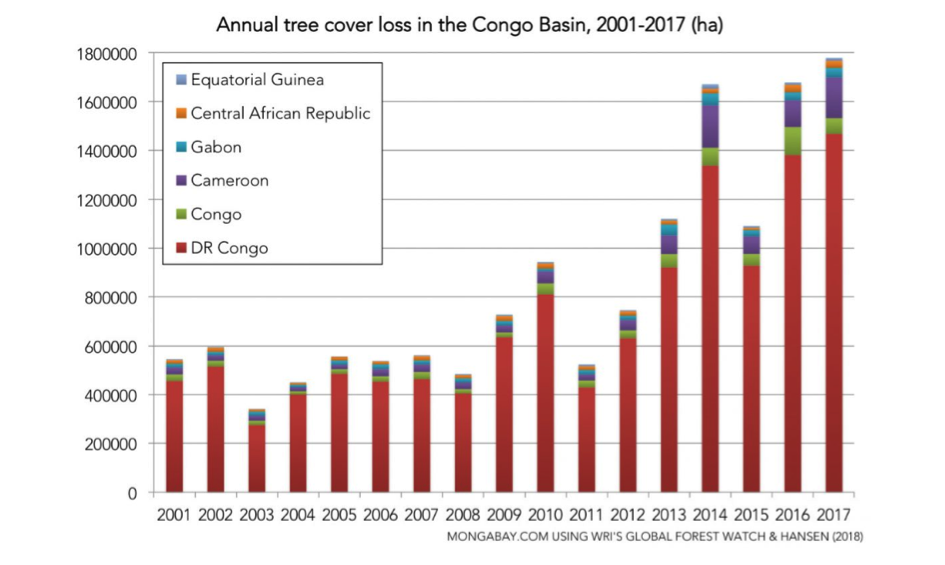
For the region as a whole, a study by Maryland University shows that the small-scale slash-and-burn agriculture accounts for 84 percent of the deforestation, while logging accounts for about 10 percent.
Finally, in some areas of the Congo Basin, mining is also an important driver of deforestation
The Republic of Congo and Gabon are oil nations. DR Congo depends on income from minerals. The global market is craving copper, coltan and cobalt to produce everything from smartphones to batteries in electric vehicles, all part of the green economy.
Nonetheless, people in the region face poverty, inequality and food insecurity.
Weaknesses in governance, institutions and infrastructure make it difficult to successfully address these challenges.
To succeed in preventing deforestation in Central Africa, there is a need for better forest governance and massive efforts to invest in poverty alleviation, rights-based family planning (DRC) and people- and forest friendly sustainable development.
National goals
All the countries in the Congo Basin generally aim at stabilizing their natural forest cover. DR Congo has committed to do so by 2030. Gabon has committed to preserve 98% of its current forest cover. However, these commitments will be difficult to honor, without support from the outside world.
The CAFI partnership
CAFI is financing programs to address drivers of deforestation. CAFI supports key reforms on land use planning, sustainable agriculture, energy and land tenure, as well as support to civil society and indigenous peoples. The programs are based on national investments plans.
The Norwegian funding is channeled through the CAFI Trust Fund. The fund is managed by the UN in New York. The World Bank, UN Agencies and several other accredited agencies implement the programs. Non-governmental organizations can receive funding only through collaborating with the accredited agencies. No funding is transferred through government accounts.
Norway has disbursed around 1.230 million so far (2015-2018) of its 2015-2020 CAFI pledge.
Results
The Norwegian support has contributed to the development of national REDD+-strategies and ambitious investment plans in Gabon and DRC.
In DRC, the Norwegian support has contributed to the establishment of several programs:
- A national REDD-fund hosted by the Ministry of Finance,
- A Technical Support Cell on Land-Use Planning
- A Tenure Reform Commission to develop rules and guidelines for land ownership
- Programs to increase knowledge about sustainable use of natural resources and sustainable agriculture and forestry in provinces with high deforestation.
- Establishment of the national forest emission reference levels in DRC and its submission to the Climate Convention.

